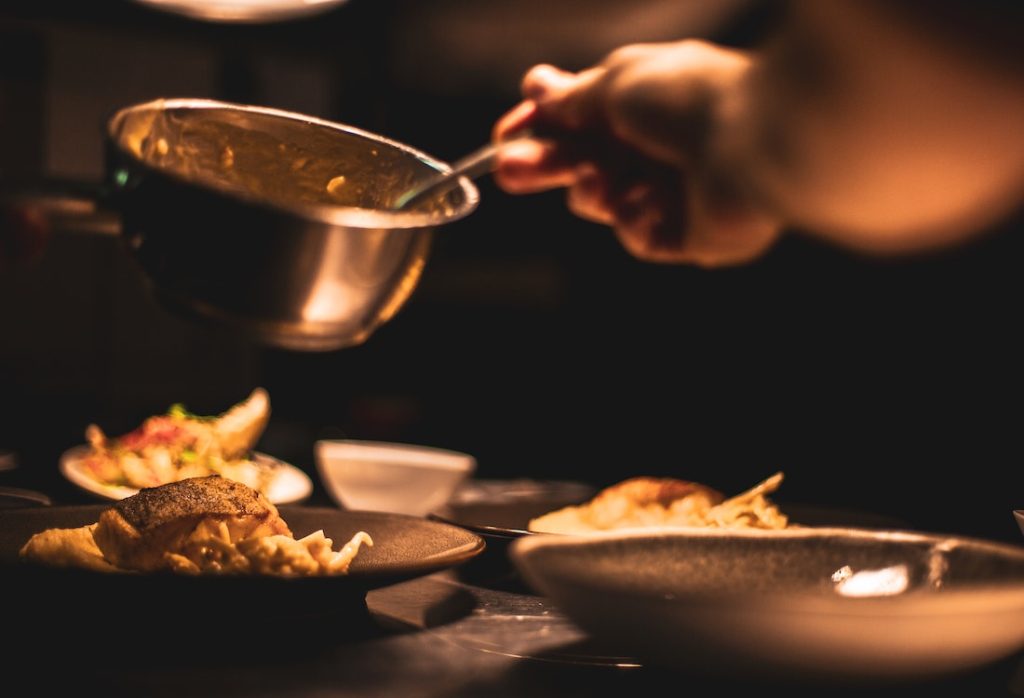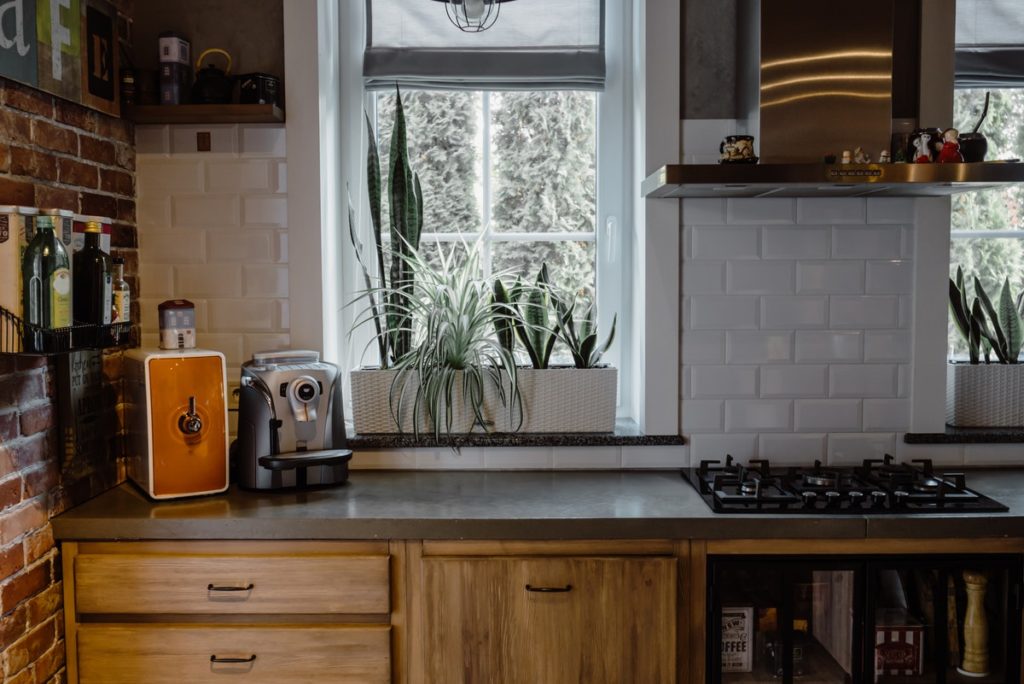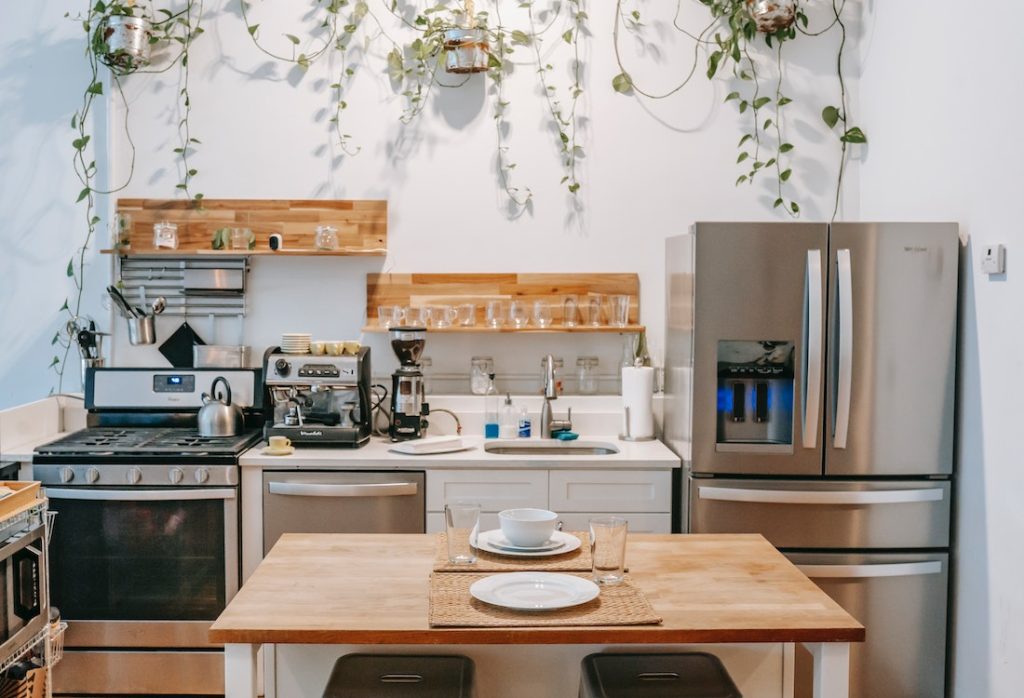In 2021, the world of home renovation saw a considerable surge. Spending on home improvement went up by a whopping 20%. And according to reports, this trend is here to stay. People love sprucing up their living spaces, but it’s not just about looks. These renovations can boost property value by 60-85%.
When transforming a home through renovations, the heart is undoubtedly the kitchen. Among the many crucial decisions to make, the range vs. cooktop debate is a significant consideration. Which one is the right fit for you? Learn more about the differences between the two appliances and determine which is best for your lifestyle.
What Is a Range and How Does It Work?

A range, also known as a stove, is like having a cooking powerhouse in your kitchen. It combines a stovetop and an oven into one convenient unit, giving you all the cooking capabilities you need.
The stovetop on top of the range has burners or heating elements that provide controlled heat for cooking with pots and pans. You can choose from different energy sources like gas, electricity, or induction, depending on your needs. It also has an oven below the cooktop, perfect for baking, roasting, and broiling.
Ranges are pretty versatile because they can do more than one thing. The stovetop uses direct heat to help you boil, fry, and sauté. And the oven uses different types of heat, like convection, conduction, and radiant heat, to cook and bake your food evenly. So, with a range, you can switch between cooking on the stove and using the oven to make all sorts of yummy recipes. It’s like having your little cooking haven.
Pros and Cons of Using a Range
Pros:
- Versatility: Ranges combine cooktop and oven functions, offering a wide range of cooking methods.
- Space Efficiency: A single appliance saves kitchen space compared to separate cooktops and ovens.
- All-in-One Convenience: Ideal for smaller kitchens, providing comprehensive cooking capabilities.
- Cost-Effectiveness: Purchasing a range can be more economical than acquiring separate appliances.
- Visual Appeal: Ranges often feature sleek designs, enhancing kitchen aesthetics.
Cons:
- Limited Capacity: Simultaneous cooking on the cooktop and in the oven might be restricted.
- Repair Challenges: Malfunctions in one component can affect the entire appliance.
- Uniformity Issues: Ovens may have temperature variations affecting baking and roasting results.
- Energy Consumption: Running the cooktop and oven simultaneously can consume more energy.
- Upgrade Difficulties: Upgrading one component may require replacing the entire unit.
What Is a Cooktop and How Does It Differ From a Range?
A cooktop is a standalone kitchen appliance specifically designed for stovetop cooking. Unlike a range, it doesn’t have an oven built-in. Cooktops come in different types, each with its way of creating heat. Gas cooktops have open flames, electric cooktops use heated coils or smooth glass surfaces, and induction cooktops use electromagnetic fields to heat compatible cookware.
The key difference between a cooktop and a range lies in their scope of functionality. While a range combines stovetop cooking and oven baking in a single unit, a cooktop focuses solely on the stovetop aspect, requiring a separate oven for baking and roasting.
Pros and Cons of Using a Cooktop
Pros:
- Flexibility: Cooktops allow customization by pairing with ovens of varying sizes and types.
- Space Efficiency: Separate ovens can be placed elsewhere, optimizing kitchen layout.
- Specialized Cooking: Induction cooktops offer precise control and rapid heating.
- Easy Replacement: Upgrading a cooktop or oven component can be done individually.
- Energy Efficiency: Induction cooktops deliver efficient heating with minimal energy wastage.
Cons:
- Limited All-in-One Functionality: Unlike ranges, cooktops lack built-in oven capabilities.
- Additional Equipment: A separate oven is required, potentially consuming extra space.
- Installation Costs: Installing both a cooktop and oven can incur higher installation charges.
- Cookware Compatibility: Induction cooktops necessitate induction-compatible cookware.
- Visual Cohesiveness: Ensuring a seamless appearance between the cooktop and oven may require careful planning.
Range or Cooktop: Which Offers More Flexibility in Cooking?
Deciding between a range and a cooktop becomes quite essential for culinary versatility. Each option has unique advantages, catering to different cooking preferences and kitchen layouts. So, which one suits your style?
Comparison of the Features, Functions, and Design of Ranges and Cooktops
- All-in-One Convenience (Range):
- Ranges seamlessly integrate a cooktop and oven in a single appliance, streamlining cooking processes.
- Ideal for compact kitchens or those seeking a unified culinary workspace.
- Offers a wide array of cooking techniques, from stovetop frying to oven baking.
- Customized Setup (Cooktop):
- Cooktops allow flexibility by pairing with a variety of ovens and tailoring cooking solutions.
- Perfect for larger kitchens or individuals preferring separate cooking and baking spaces.
- Enables specialized equipment choices, such as high-performance ovens or induction cooktops.
- Cooking Methods (Range):
- Ranges offer diverse cooking options in one unit, eliminating the need for separate purchases.
- Suited for multi-course meals where stovetop and oven usage overlap.
- Precision and Energy Efficiency (Cooktop):
- Induction cooktops deliver rapid and precise heating, minimizing energy wastage.
- Induction technology ensures immediate and even heat distribution, enhancing cooking control.
- Aesthetics and Design (Both):
- Ranges and cooktops come in various styles, complementing kitchen aesthetics.
- Cooktops offer the flexibility to position the oven separately, enhancing visual appeal.
- Maintenance and Repairs (Cooktop):
- Cooktops enable independent repairs or upgrades, minimizing disruption and costs.
- Range malfunctions might affect both cooking components, potentially leading to higher repair expenses.
What To Consider When Choosing Between a Range and a Cooktop
Choosing between a range and a cooktop is a big decision when it comes to kitchen design. It affects how versatile your cooking can be, how you use your space, and even how energy-efficient your kitchen is.
Kitchen Layout: Which Option Maximizes Space and Functionality?

When it comes to your kitchen layout, choosing between a range or a cooktop is a big decision. Ranges are great for smaller kitchens because they have an oven built, giving you a complete cooking solution in one unit. On the other hand, cooktops offer more flexibility by allowing you to place the oven separately. This feature can be a real advantage in larger kitchens, improving workflow and using the available space better.
So, look closely at your kitchen size and how you work in the space to decide which option will give you the best functionality and efficiency based on your cooking needs.
Energy Efficiency: Which Option Offers Better Energy-Saving Features?
Energy efficiency is a significant factor in today’s environmentally conscious world. Cooktops, particularly induction models, tend to be more energy-efficient than traditional ranges. Induction technology heats the cookware directly, reducing heat loss and expediting cooking times. Ranges, while offering combined cooking and baking capabilities, may consume more energy when both the oven and cooktop get used simultaneously.
If saving energy is important to you, you might consider going for an induction cooktop and a separate energy-efficient oven. By evaluating how you use energy and thinking about long-term savings, you can determine the best energy-efficient option for your cooking needs.
Range and Cooktop Brands: Top Recommendations for Your Renovation
Embarking on a kitchen renovation opens the door to a world of possibilities, and choosing the right range or cooktop brand is paramount in achieving a harmonious blend of functionality and aesthetics.
Which Brands Provide a Balance of Performance, Reliability, and Style?
Selecting the ideal range or cooktop brand involves careful consideration of performance, reliability, and style. Among the top contenders, brands like Wolf, Viking, and Bosch consistently deliver exceptional performance and durability. Wolf’s premium ranges and cooktops are renowned for their precision cooking and sleek designs, while Viking boasts professional-grade options known for their robustness. Bosch offers a perfect fusion of innovation and elegance, catering to modern kitchen aesthetics. These brands and others like KitchenAid and GE present a spectrum of choices, allowing you to strike the perfect balance between cooking prowess, dependability, and visual appeal in your kitchen renovation journey.
Budget Considerations: Which Option Offers the Best Value for Your Investment?

When it comes to kitchen renovations, it’s essential to understand the value of ranges and cooktops. They play a significant role in aligning your budget with your cooking dreams. Ranges, for example, combine a cooktop and oven in one unit, saving you money by avoiding the need to buy a separate oven. On the other hand, cooktops offer a modular approach, allowing you to choose an oven that fits your budget and needs. So, whether you go for a range or a cooktop, options suit every kitchen and budget.
When you carefully evaluate your budget constraints and long-term cooking needs, it empowers you to make a smart investment. This not only enhances your kitchen but also optimizes your financial resources.
When it comes to kitchen design and renovation, choosing between a range and a cooktop is all about finding the perfect balance. It’s about creating a culinary space that meets your cooking needs, reflects your style, and fits your budget. By considering factors like cooking versatility, kitchen layout, energy efficiency, and brand preferences, you can make an informed decision that enhances your cooking experience and brings functionality and style to your home. So, consider all these factors and choose the best option for your lifestyle. With careful planning, you can transform your kitchen into a culinary haven.
Frequently Asked Questions
Is a range top better than a cooktop?
The superiority between a range top and a cooktop depends on needs. Range tops offer an integrated solution, while cooktops allow customized setups with separate ovens. Choose based on space, cooking habits, and design preferences.
Can I replace my range with a cooktop?
Yes, you can replace your range with a cooktop. Ensure compatible connections for gas or electricity and consider separate oven placement for a seamless transition.
How big is a stove range?
Stove ranges typically measure around 30 to 40 inches in width, 25 to 30 inches in depth, and 36 to 40 inches in height. Sizes may vary based on brand and model.
What size is a range cooktop?
A range cooktop usually comes in standard widths of 30, 36, or 48 inches. Depths vary around 20 to 22 inches, and height is typically around 3 to 4 inches. Specific dimensions may vary depending on the model and manufacturer.
How deep is a cooktop?
A cooktop’s depth typically ranges from 19 to 22 inches, ensuring compatibility with standard kitchen countertop depths and facilitating installation. Variations can occur based on brand and specific model.

